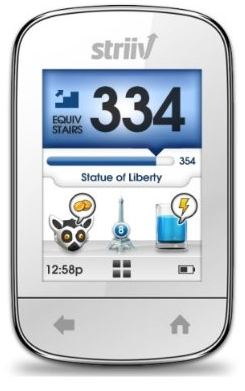 By Dr Harry I took up an offer for a free pedometer as part of the Living Streets Walk to Work Week initiative. It’s a simple enough device which I clip onto my belt. Apart from a few questions from colleagues, it’s very easy to forget about. After calibrating the pedometer to measure the steps I take, it tallies the number of steps taken from 0 to 99999 then starts again from zero. This little free device can also tell me the distance I have walked and calories burned after setting my height and weight details with a click of a button. It’s not very sophisticated, but I like to see how much walking I actually do compared to how much I think I do. On the first day I wore it I was quite disappointed that I was only walking about 7,500 steps per day. I was really busy at work and thought I was a lot more active than this! The next day was not much better – 7,800 steps. The following day I was working a 12 hour shift. When I got home (exhausted!) I was surprised that my steps had smashed through the 10,000 barrier to 12,500 steps! I don’t know why 10,000 steps was such a milestone, but it felt like a goal that should be achievable which is why I was initially upset at having walked less than this. It turns out that the Japanese have been using pedometers for years. Back in 1961 researchers determined that people took on average 3000 – 5000 steps per day. The “10,000 Steps a Day” campaign was born as a public health initiative. Each Japanese household apparently owns 3.1 pedometers! I took my pedometer with me when I went walking over the weekend. On a 45 minute stroll around the neighbourhood, I added about 5,000 steps. That’s about 110 steps per minute, which is a decent walking pace. This is the equivalent to most people’s average steps per day. On the Sunday I took a longer walk, and was astonished that I had walked 12,000 steps in 1 hour 45 minutes – almost as much as the gruelling 12 hour shift! This hit home how easy and effective reaching the 10,000 steps per day barrier is. If I walked an extra 30 minutes per day – during my lunch hour or to and from work I could easily add an extra 3000 steps to my day (increasing my baseline of about 7,500 to over the 10,000 steps per day, my target). In fact at my walking pace (about 110 steps per minute) I would be walking 3300 steps every half an hour. Having a pedometer has made me try to do more things to rack up more steps – like taking the stairs instead of the elevator, or running up a moving escalator instead of standing still. In fact anything to move more! I will also happily get off the train at the stop before my station if I see my target for the day has not yet been reached. It has been a surprisingly good motivator. With iPhone and Android apps taking advantage of accelerometer technology you can freely and easily get access to even more accurate activity-level monitors than the simple pedometer that I have. And even more sophisticated products exist such as Nike’s sport band, or the Fitbit which can monitor your activity levels, use GPS to track your movements, even tracking stairs climbed. These devices even allow you to synchronise with your computer or join a community of like-minded people to gain extra motivation or share experiences. Even the Walk to Work initiative aims to sign people up and from different workplaces to compete for the title of “Fittest Workplace” or “Most Steps Walked”. It’s a nice idea to get the public more aware of the health benefits of walking and having a pedometer is a good way to track your activity level objectively over time. Check out Amazon.com and Amazon.co.uk for a pedometer that suits you. What do the steps you take per day say about your activity level?  Although your personal finances and your business success are my primary interest, I believe you only operate at peak efficiency when you're fit and healthy. If you feel good, it filters through to your work. To help you with that, click for your free ebook: The Quick Guide to Sexy
0 Comments
Leave a Reply. |
By Heather
|
Heather Katsonga-Woodward, a massive personal finance fanatic.
** All views expressed are my own and not those of any employer, past or present. ** Please get professional advice before re-arranging your personal finances.

 RSS Feed
RSS Feed


